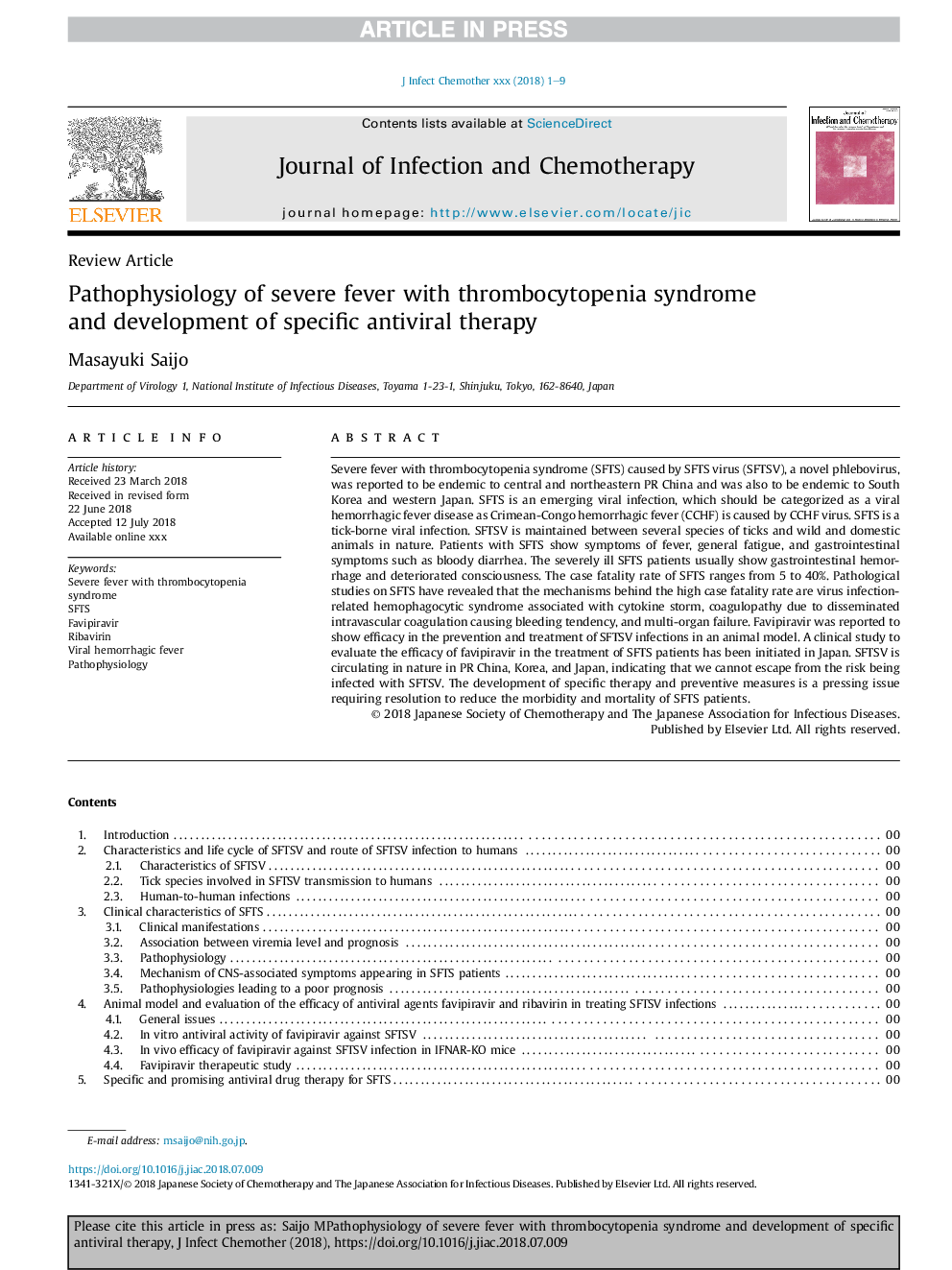| Article ID | Journal | Published Year | Pages | File Type |
|---|---|---|---|---|
| 8957925 | Journal of Infection and Chemotherapy | 2018 | 9 Pages |
Abstract
Severe fever with thrombocytopenia syndrome (SFTS) caused by SFTS virus (SFTSV), a novel phlebovirus, was reported to be endemic to central and northeastern PR China and was also to be endemic to South Korea and western Japan. SFTS is an emerging viral infection, which should be categorized as a viral hemorrhagic fever disease as Crimean-Congo hemorrhagic fever (CCHF) is caused by CCHF virus. SFTS is a tick-borne viral infection. SFTSV is maintained between several species of ticks and wild and domestic animals in nature. Patients with SFTS show symptoms of fever, general fatigue, and gastrointestinal symptoms such as bloody diarrhea. The severely ill SFTS patients usually show gastrointestinal hemorrhage and deteriorated consciousness. The case fatality rate of SFTS ranges from 5 to 40%. Pathological studies on SFTS have revealed that the mechanisms behind the high case fatality rate are virus infection-related hemophagocytic syndrome associated with cytokine storm, coagulopathy due to disseminated intravascular coagulation causing bleeding tendency, and multi-organ failure. Favipiravir was reported to show efficacy in the prevention and treatment of SFTSV infections in an animal model. A clinical study to evaluate the efficacy of favipiravir in the treatment of SFTS patients has been initiated in Japan. SFTSV is circulating in nature in PR China, Korea, and Japan, indicating that we cannot escape from the risk being infected with SFTSV. The development of specific therapy and preventive measures is a pressing issue requiring resolution to reduce the morbidity and mortality of SFTS patients.
Keywords
Related Topics
Life Sciences
Immunology and Microbiology
Applied Microbiology and Biotechnology
Authors
Masayuki Saijo,
